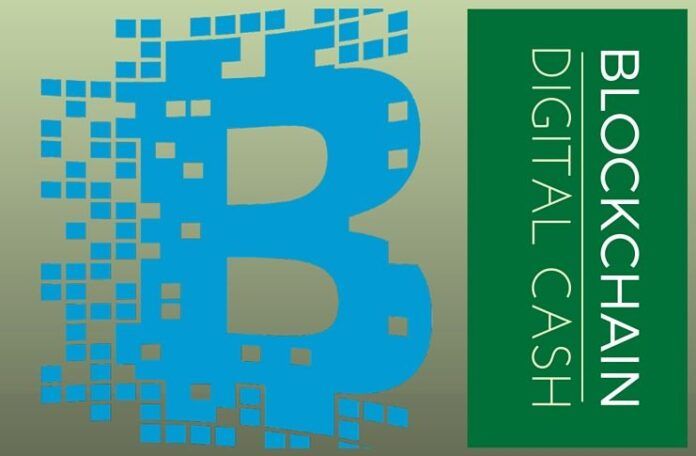
More than 100 executives from some of the world’s largest financial institutions assembled for a personal meeting on a Monday last April. They weren’t there to just talk about blockchain, the new technology some predict will transform finance, but to build and experiment with the applications.
By the end of the day, they had seen something revolutionary: U.S. dollars transformed into pure digital assets, capable of being used to do and settle a trade immediately.
The occasion — declared in a statement this Monday — marked a vital moment in the development of blockchain, famous both for how many businesses were involved, as well as what was achieved. Wall Street executives have been captivated by the technology’s potential because it offers a way to free up billions of dollars by speeding trades that currently can take tying up capital. But cash is being transformed by a huge piece of that puzzle into an electronic kind. And while some companies have conducted experiments, the Chain event demonstrated a large number of them are looking together at a potential option.
“We created a digital dollar” to reveal the group at credit on a blockchain and Nasdaq an instant debit, said chief technology officer at Fiserv, Marc West, a transaction and payments firm with more than 13,000 clients across the financial business. “This is the first time the money has moved.”
Quietly Building
Chain is already known in some Wall Street groups for the job to help Nasdaq shift trading of non-public company shares onto a blockchain. But for the most part, it’s kept relatively quiet compared to other fintech enterprises.
What Chain has done is engineer the complicated elements needed to work, in order that its customers can build custom solutions in addition to that to solve company problems, he said.
“We’ve been quietly building with a whole bunch of folks for a few years,” he said. “Blockchains are networks, so we think collaboration is important, but what’s even more important than collaboration at the beginning is getting the model right.” The event was kept secret so executives could freely share nascent ideas and take risks. “The more press, the less quality of the dialogue and problem-solving,” he said.
The most common blockchain is the one supporting the digital currency Bitcoin, which has been active since 2009. Fiscal companies have been reluctant to adopt bitcoin, yet, as its anonymous users could entangle banks in breaches of anti-money-laundering and know-your-customer regulations.
‘Mainframe Age’
Citigroup and Nasdaq partnered to research how they could work together, said Brad Peterson, the exchange-owner’s chief information officer. He said blockchain additionally could be used for reference data specific stocks or bonds are identified for instance, across all markets.
Wall Street was among the first beneficiaries of computers. 30 years after, those legacy systems could be a hindrance to further technological evolution, he said.
That’s the fantastic opportunity — how to unlock that ability to work your way out from under the mainframe era he said.
There’s a differentiation between that system, while all the time moves electronically today and what it means to say money is digital. Electronic payments are really just messages that cash needs to move from one account to another, and this reconciliation is what adds time to the payments process. For customers, moving money between accounts can take days as banks wait for confirmations. Digital dollars, however, are pre-loaded into a system like a blockchain. From there, they can be swapped immediately for an asset.
“Instead of a record or message being transferred, it’s the real asset,” Ludwin said. “The resolution and The payment become the same thing.”
Uncommon Cooperation
Ian Lee, head of Citigroup’s global lab network and acceleration fund, said one of the first areas of research Citigroup undertook when it began studying blockchain was how digital cash could be used. He was impressed with the variety of clients Chain brought together, as collaboration on Wall Street is rare. A lot of companies are facing the same problems with how to make blockchain a reality for their business, he said.
“While blockchain technology has a lot of potential, it’ll have to integrate with and co-exist with the financial system that exists today,” he said.
Ludwin said blockchain continues to be validated on Wall Street, and now it’s time to concentrate on creating solutions.
“Placing everything together is no touch of work, nor is re-engineering business processes within large organizations ,” he said. “This isn’t ‘financial engineering.’ This is software engineering that’s going to reshape services that are financial.”
Note:
1. Text in Blue points to additional data on the topic.
- Indian Parliament’s Special Session is convened to mark the shifting to new Parliament building - September 3, 2023
- Why did Rajat Sharma of India TV not declare that Adani owns more than 16% shares in his channel? - January 29, 2023
- Prannoy Roy to get Rs.605 crore from Adani as per Stock Exchange filing. Why is Income Tax not acting on Roys’ dues of over Rs.800 crore? - January 4, 2023










